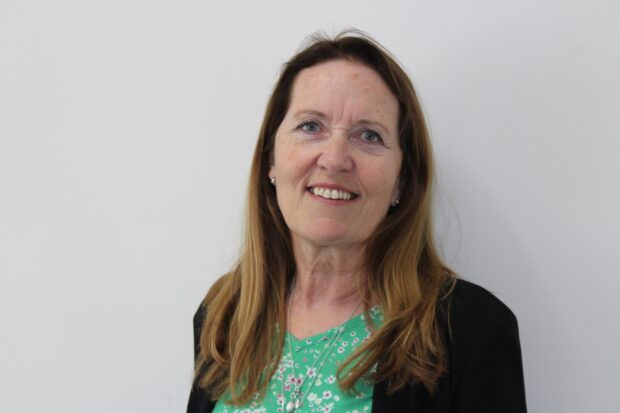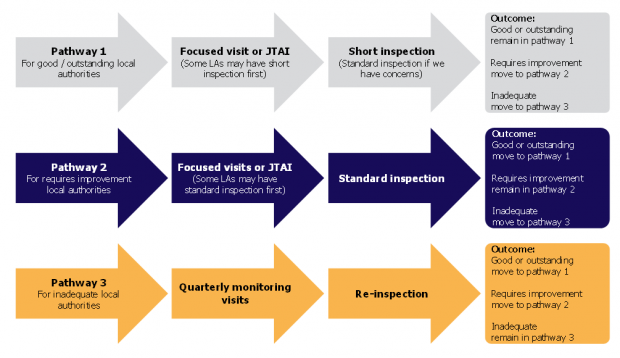
Today [29 November 2017] saw the publication of the Inspection of Local Authorities (ILACS) framework. This is the culmination of almost two years of hard work by my social care colleagues in Ofsted, to whom I am greatly indebted.
What will ILACS mean for local authority children’s services? Well first and foremost, I believe this is a step forward for inspection that will make a genuine and positive impact on children’s lives.
Regular contact with local authorities is at the heart of the new system. Ofsted will have more frequent opportunities to identify any issues of concern, allowing areas to take swifter action to address them. Quite simply, we don’t want to wait until the next inspection to find out that practice has deteriorated. This will be a more timely reflection of social work practice and of the experience of children in these areas.
ILACS is also a ‘system’ of inspection that is proportionate, flexible, and truly bespoke to each and every area we inspect. What do I mean by this? Well, each feature of the system informs how the rest of it works. So a local authority’s current Ofsted grade will determine the kind of inspection it has next time, and the contact and support it receives in-between visits.
In short the new approach means:
- Local authorities previously judged to be good or better will get a one week short inspection every three years
- Those that required improvement to be good will get a two week standard inspection every three years
- Both standard and short inspections will result in judgements on the established four point scale
- Focused visits will identify good practice or catch local authorities before they fall
- An annual conversation between Ofsted and local authorities
- An annual self-evaluation of social work practice by local authorities
- Our approach to authorities judged to be inadequate will remain the same as now – quarterly monitoring followed by an inspection under the single inspection framework (SIF).

Inspection, rightly, is no walk in the park. And I want to stress that ILACS will be no less rigorous than the Single Inspection Framework (SIF). However, the SIF was intentionally a one size fits all inspection. And while it has given us a good baseline to move forward from, now is the time for a more risk-based, proportionate way of looking at how children’s services departments are performing.
Most authorities will receive a shorter inspection once every three years, which will be punctuated by ‘focused visits’. As I mentioned, more frequent contact between Ofsted and local authorities will identify any issues within their practice, and help us to ‘catch’ areas before they fall. The visits will result in a narrative outcome letter, which will be published, making clear what improvements are needed (where relevant). And of course this isn’t all about identifying failings. Focused visits are an opportunity for us to showcase good practice, too.
Also central to the new inspection system is an ‘annual conversation’ between Ofsted and local authorities. This formal discussion, alongside self-evaluation, will help local authorities to critically evaluate their own performance and articulate what they think is working well for children in their area. It will also form part of the intelligence Ofsted uses to decide where and when to inspect. One of the big benefits of the new approach, in my view, is that will enable us to prioritise our resources where they are most needed.
To be clear though, where self-evaluation identifies weaknesses in practice and the local authority has credible plans to take clear, appropriate and effective action in response, we will treat this as effective leadership rather than an automatic trigger for an inspection or focused visit. Any issues raised through self-evaluation will be discussed with the local authority at their annual engagement meeting.
As ever, children and their experiences are at heart of this new approach. However, we also hope the ILACS system helps – even in a small way - to lessen the ‘cliff-edge’ associated with inspection and the implications this has for social work staff on the ground. Of course being inspected is never going to be a completely relaxing experience. But these changes are also aimed at supporting local authorities on their improvement journey.
We had an excellent response rate to our consultation, as well as constructive discussions, debates and feedback with stakeholders from across the sector. Their views have been instrumental in shaping the way forward. A special thank you too to the areas that agreed to be our guinea pigs and pilot the new inspections and focused visits!
It has been extremely rewarding to oversee the development of a new system of inspection and to watch it come to fruition. I’m truly grateful to everyone who has taken part in the development process, and look forward to the official launch in January.